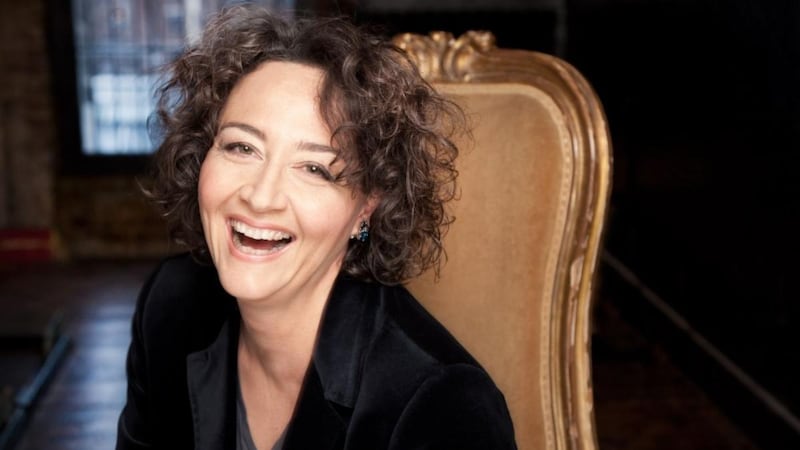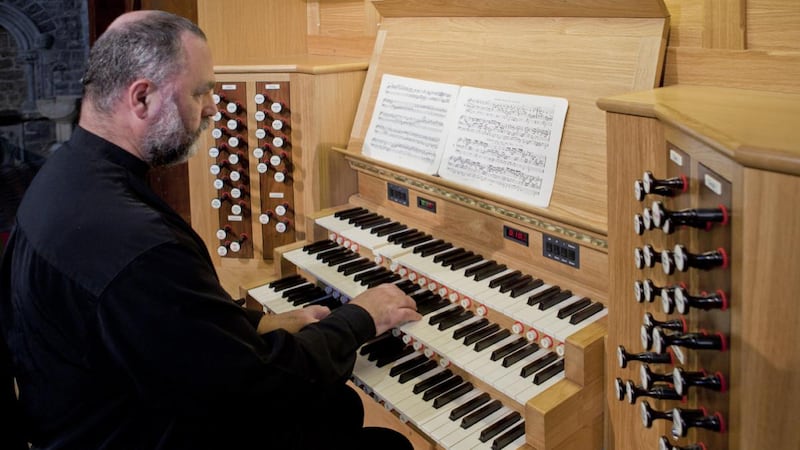Quatuor Mosaïques are no strangers to Ireland or Kilkenny Arts Festival. This celebrated period-instruments string quartet made its Irish debut all of 20 years ago at the West Cork Chamber Music Festival, and gave three concerts in Kilkenny’s celebration of Schubert two years ago.
This year's three concerts centred on Beethoven's Op. 59 quartets, the set which incorporates Russian themes in honour of Count Andreas Razumovsky, the Russian ambassador in Vienna, who commissioned them. Each of the works was presented in the context of earlier works by Haydn and Mozart.

I only got to hear the last of the concerts, at the Black Abbey on Thursday afternoon, where the programme included the final Razumovsky, the one which an early reviewer exempted from his charge that the first two were “very long and difficult, not to grasped by all”.
The Mosaïques played it as if it were cut from very much the same cloth as the programme’s works by Haydn (the Quartet in A flat, Op. 64 No. 6) and Mozart (the Adagio and Fugue in C minor, K546). The approach was understated and observant, but with expressive inflection at times so reserved that the effect was often peculiarly depersonalised. It was as if players’ determination was to preserve decorum and avoid solecism at all costs. The result was a sophisticated mildness that bordered on blandness.
The Mosaïques were founded in 1985 when the world of period instruments performance was much more cut and dried than it is today, living through a reaction against a dominant performance style that was viewed as an emotionally overburdened, historically ill-informed approach to music-making.
Contralto and conductor Nathalie Stutzmann’s ensemble Orfeo 55 was founded in 2009, by which time period instrument players had become altogether more interventionist in their musical approach, some of them taking the kind of liberties that they or their forerunners had once derided.
Orfeo 55 has had a relatively short life. It folded last April, and recreated itself as Phoenix 55 to perform concerts in Kilkenny and a number of other European music festivals.
All-Bach programme
Their all-Bach programme at St Canice’s Cathedral on Thursday evening had a freedom and a loose-limbed spring that was worlds away from the not-a-hair-out-of-place manner of Quatuor Mosaïques.
Stutzmann is well-known to Irish audiences as the principal guest conductor of the RTÉ National Symphony Orchestra with which her music-making has been one of the most consistent pleasures of the last few years.
Her handling of Bach – a sequence of sinfonias and arias in which she shared the vocal honours with Zagreb-trained baritone Leon Košavi – was every bit as invigorating as her previous work here would have led you to expect.
One of the strange features with her time at RTÉ is that none of the programmes presented her as a singer. The evidence in Kilkenny is that this has been a serious loss. Her Bach singing was finely focused and at times powerfully suggestive. She allowed herself only rare excursions into heavy vibrato at dynamic peaks, and the few times she was called on to show her turbo-charged lower range was a useful reminder of how much we are missing by living in an age when genuine contraltos are so few and far between. Košavi, too, sang with gorgeous immediacy and freshness.
The evening was not without a genuine coup de théâtre – the totally unexpected moment when the players showed that they were all singers, too, and raised their voices to deliver a chorale.

There was a second all-Bach programme, on the organ of St Canice's on Saturday morning, given by Dubliner Malcolm Proud, a long-time Kilkenny resident who is also the cathedral's organist. His carefully balanced programme framed a clutch of canonic works (including the great Canonic Variations on Vom Himmel Hoch, BWV769) with the Fantasia and Fugue in C minor, BWV537 and the Prelude and Fugue in E minor, BWV548, all played with an always absorbing architectural awareness.
Song of the Books
The second half of the festival also included two new music events, by Crash Ensemble at Rothe House on Friday, and the Quiet Music Ensemble in the Parade Tower of Kilkenny Castle on Sunday.
Crash’s performance of Ed Bennett’s Song of the Books was billed as an outdoor event and scheduled for performance in a courtyard. But weather forced it indoors. The Quiet Music Ensemble’s concert was an indoor event, but there was such a storm near the start of the event that the sounds of nature impinged much more than they had when Crash were playing.
Crash is an ensemble that likes to live up to its name, and Bennett certainly obliged with a rather too narrow palette of repetition-rich, heavy-duty sounds. In spite of its name, the Quiet Music Ensemble does not actually focus exclusively on quiet music. But it was two of the quietest pieces which made the strongest impression in Sunday’s programme.
Heather Frasch’s I Touch What I Cannot Quite Reach is described as being “for kinetic sound objects, boxes and shadows” and might best be thought of as a piece for Jean Tinguely-like music boxes which vibrate to produce sounds of delicate tinkling and can also project shadows of the performers’ manipulations on to their raised lids.
Marianthi Papalexandri-Alexandri’s Resonators, which like Frasch’s work was being heard for the first time, is a “performative sound kinetic installation/composition” which has performers controlling (or, perhaps more accurately, trying to control) the sounds they can make with pins on rudimentary turntables. Strange but oddly fascinating stuff.












